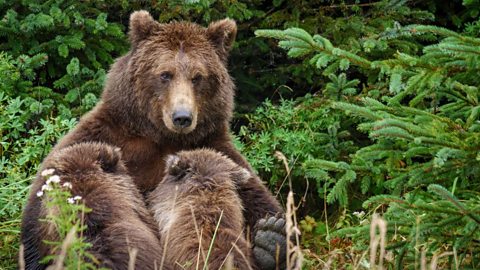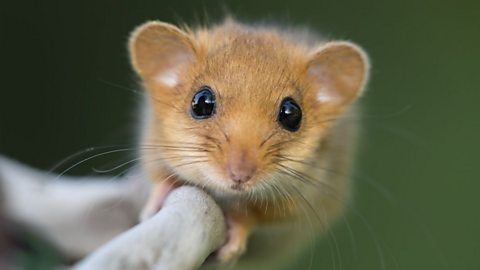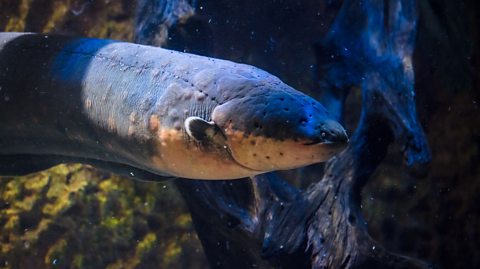We all know that thousands of species worldwide are under threat of extinction right now, due to climate change, deforestation, hunting and other human activities.
But if you could take a hike through Britain a few thousand years ago, you might stumble across a few creatures that have now gone extinct in our part of the world. Do their names sound familiar?
 Image source, Arterra
Image source, ArterraElk
Eurasian elk are one of the largest deer species on the planet, second only to their North American relative, the moose. They are able to cope with the long, cold winters of Northern and Eastern Europe, as well as Asia, where there are still populations. Elk fell into extinction in the UK over 3,000 years ago, in part because of over-hunting. Their meat, skin and antlers were all sought after.
This already huge mammal actually has an even bigger extinct ancestor. The Irish elk roamed across Eurasia during the last glacial period (a cold spell marked by extensive glaciation), which ended over 11,000 years ago. From fossil discoveries, we know that its antlers could grow up to 3.5m wide and weighed 20kg each.
Brown Bear
It’s not entirely clear when wild native brown bears went extinct in the UK. It could have been as long ago as the Bronze Age or as recent as the medieval period. Remains discovered in a cave in the Yorkshire Dales indicate that there were still brown bears living in Britain around 425 to 594 AD. However, these bears may have been imported into Britain from Europe by the Romans, for gladiator fighting and other entertainment.
While brown bears were one of Britain’s top predators, they were also omnivores. This means they had a wide and varied diet, including everything from deer to roots and berries. Brown bears can still be found in continental Europe, North America and Asia, typically in forests and mountainous areas.
 Image source, Arterra
Image source, Arterra Image source, Education Images
Image source, Education ImagesGreat Auk
Also known as the ‘Penguin of the North’, the Great Auk was a large, flightless bird. Not only is it extinct in Britain, but also right across the world. Great Auks were easy targets for hunters, and there was a market for their eggs. Their feathers were also used to stuff mattresses.
The last known breeding pair in the world died on 2 June 1844, when they were killed on an island off the coast of Iceland. Four years earlier, in June 1840, the last Great Auk in the British Isles was captured and killed on the Scottish island of St Kilda.
The Great Auk lived in large colonies in and around the North Atlantic, mainly on remote and rocky islands.
 Image source, Sepia Times
Image source, Sepia Times Image source, BBC
Image source, BBCWolves
While dogs might be man’s best friends, our ancestors’ relationship with wolves wasn’t so great. They were seen to pose a threat to both humans and livestock, and so were hunted to extinction by the mid-18th Century. It is thought that wolves held out the longest in Scotland, where they were able to hunt red deer.
The population of grey wolves has quadrupled in continental Europe between 1970 and 2005. Larger populations can be found in North America, mainly Canada and Alaska, and Asia.
This top carnivore is a pack animal, with wolves hunting together in groups to take down larger prey, like deer.
 Image source, BBC
Image source, BBCLynx
Although the Eurasian lynx can still be found in parts of Europe and Asia, it has not been seen in Britain since medieval times.
Deforestation was a major factor in the disappearance of the lynx, as it reduced their much-needed cover when hunting and led to a decline in deer populations, a key food source. As well as deer, lynx also ate Arctic hares and lemmings.
Despite being Europe’s third largest predator, they’re a pretty elusive species, hunting under the cover of darkness, making use of their excellent eyesight and hearing.
 Image source, DEA / G. CAPPELLI
Image source, DEA / G. CAPPELLIHelping extinct animals return to Britain
Beavers fell into extinction in the 16th Century after they were hunted for their meat and fur. However, in recent years, a series of schemes in Scotland and England have seen beavers successfully reintroduced to the wild as they are a ‘keystone species’ - a species that significantly alters the habitat around it and has a large effect on other organisms.
Following the success of these trials and similar schemes for white storks and the Large Blue butterfly, which animal might we see reintroduced next?
According to Mark Elliott, the Devon Beaver Project lead, “the focus is likely to be on those with important ecological functions, such as bison that create open glades in woodlands and lynx that keep numbers of roe deer at more natural levels, allowing woodland regeneration.
“Another species that is already being reintroduced into parts of the country where it is absent is the pine marten. Although it still lives in Scotland, it was wiped out from England and Wales by gamekeepers, but is now being reintroduced. Pine martens are important because they control American grey squirrels which damage trees and kill the native red squirrel.”
Five British animals you didn't know are endangered
Have you seen one of these animals in the wild before?

Quiz: Can you guess the animal from its misleading name?
Take this quiz to see if you know which animals are their namesake and which are misleading.

Five animals that holiday in colder climates
Which animal has the longest migratory journey on Earth? Here are five animals that prefer to 'chill' in colder climates.
